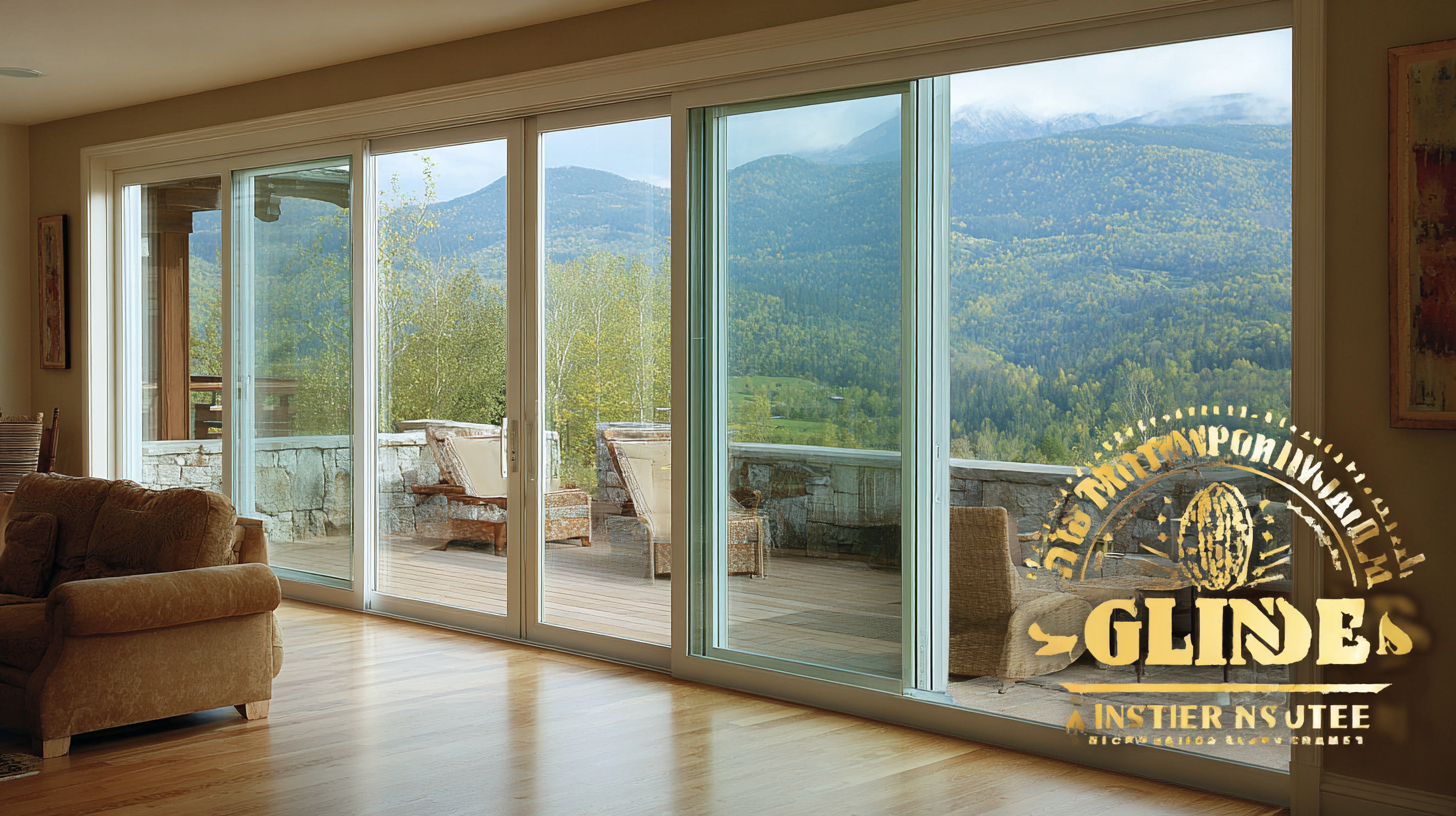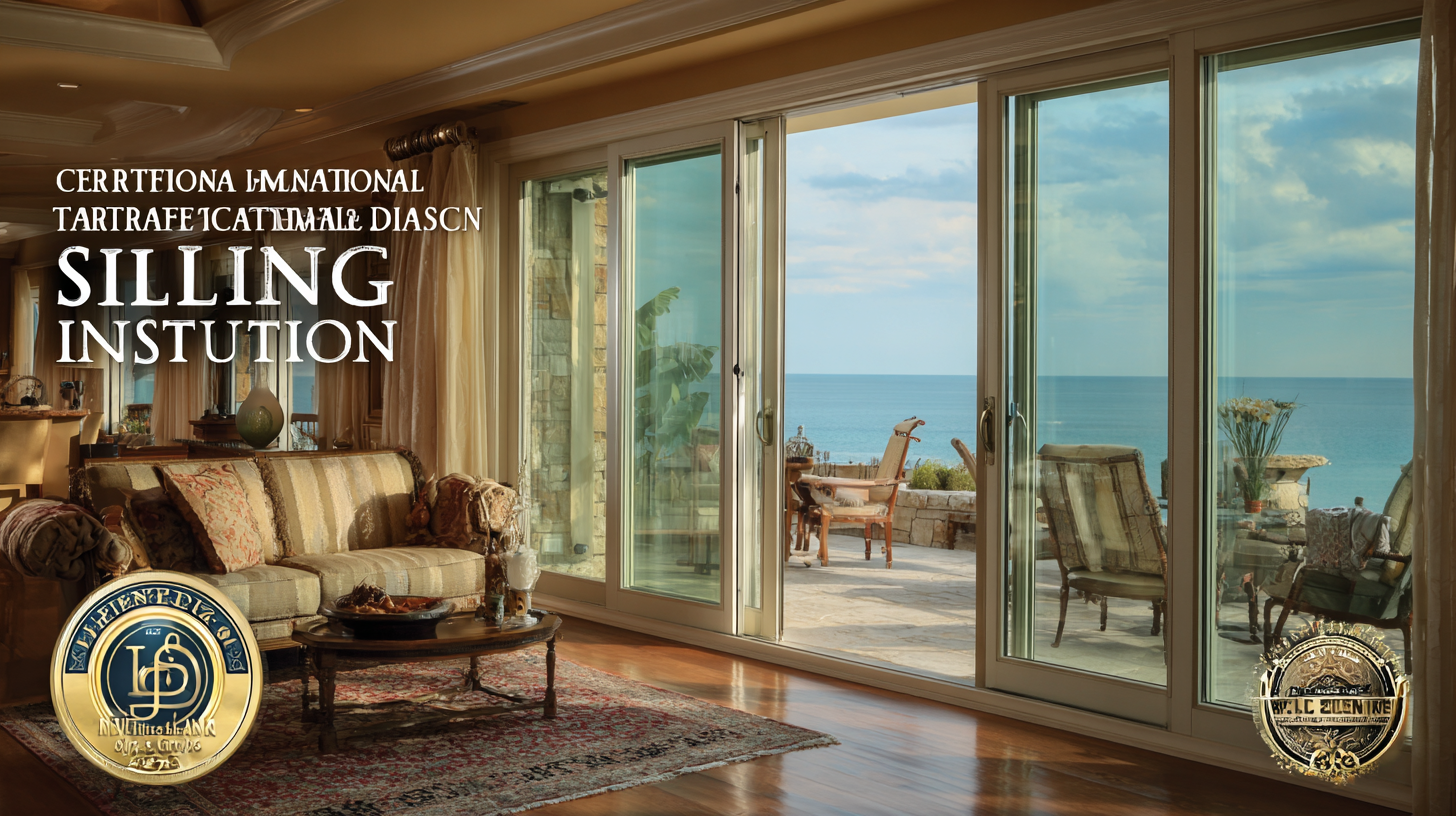Mastering International Trade Certification for Best Sliding Glass Door Installation: A Step-by-Step Guide
In an increasingly globalized market, mastering international trade certification has become essential for businesses engaged in the sliding glass door installation industry. According to recent industry reports, the global sliding door market is projected to reach USD 20 billion by 2027, with a CAGR of 5.9% from 2020 to 2027. This growth opens up significant opportunities for manufacturers, particularly in countries like China, which is a leading producer of sliding glass doors, renowned for both quality and cost-effectiveness. Understanding the complexities of international trade certification can enhance a company's credibility and competitiveness on a global scale, ultimately facilitating smoother installation processes and ensuring compliance with international standards. This guide will provide a comprehensive step-by-step approach to navigating the certification landscape specifically tailored for professionals involved in sliding glass door installation.

Understanding International Trade Certification and Its Importance
International trade certification plays a crucial role in the installation of sliding glass doors, ensuring that industry standards and regulations are met across borders. This certification not only validates the quality and safety of the products but also facilitates seamless transactions between manufacturers and consumers in different countries. By understanding the importance of this certification, installers can enhance their credibility and ensure they are working with compliant materials that meet local and international standards.
Furthermore, obtaining international trade certification can significantly impact a business's reputation in a competitive market. It demonstrates a commitment to quality and safety, which can lead to increased consumer trust and confidence. For sliding glass door installations, adhering to these standards means that the final products offer durability, energy efficiency, and aesthetic appeal, catering to a wide range of customer needs.
As installers master the complexities of international trade certification, they position themselves as experts in their field, ultimately leading to improved customer satisfaction and business growth.
Essential Tools and Materials for Sliding Glass Door Installation
When it comes to installing sliding glass doors, having the right tools and materials is crucial for achieving both functionality and aesthetics. A report from the National Association of Home Builders suggests that up to 90% of installation issues stem from improper tool usage and inadequate materials. Essential tools include a level, tape measure, and a rubber mallet, which are vital in ensuring precise measurements and proper alignment. The use of quality materials, such as energy-efficient glass and durable hardware, can enhance the longevity of the installation and improve insulation ratings, as supported by a recent study stating that homes with high-performance sliding doors can experience up to 30% lower energy costs over time.

Additionally, selecting the right frame material is paramount. According to the American Architectural Manufacturers Association, vinyl frames offer superior weather resistance and are often recommended for coastal areas, whereas aluminum frames provide a sleek look and can accommodate various design aesthetics. Proper caulking and sealing materials are equally important, as they prevent moisture intrusion and improve the door's performance. For a successful installation that meets international trade certification standards, an investment in these essential tools and materials is not just beneficial but necessary.
Step-by-Step Process for Installing Sliding Glass Doors
When it comes to mastering the installation of sliding glass doors, understanding the nuances of the step-by-step process is crucial. This intricate task not only requires precise measurements but also a good grasp of the tools involved. The very first step is to ensure you have the right materials and tools at hand, which typically include high-quality sliding glass doors, tracks, screws, and applicable installation hardware. With these components ready, the next phase involves carefully measuring the installation space to confirm that your selected door fits perfectly, which is pivotal in avoiding future complications.

Once the measurements are established, the installation can commence. First, the track should be securely installed to provide a stable foundation for the doors. Next, you will need to properly set the sliding glass doors into the track, ensuring they glide smoothly without any resistance. Additionally, it is essential to apply the correct sealants to prevent air leakage and maintain energy efficiency. Attention to detail throughout this step-by-step process will not only guarantee a successful installation but will also enhance the lifespan and functionality of your sliding glass doors.
Navigating Compliance and Regulatory Requirements in Trade
Navigating the compliance and regulatory requirements in international trade is crucial for ensuring the successful installation of sliding glass doors. According to a recent report from the International Trade Administration, approximately 80% of companies face delays due to regulatory issues, underscoring the need for meticulous attention to compliance. This includes understanding the standards set by bodies such as the International Organization for Standardization (ISO) and ensuring that all imported materials meet safety and quality regulations.
Moreover, an analysis by the World Trade Organization highlights the importance of adhering to trade compliance frameworks to minimize risks and penalties. Companies engaged in the installation of sliding glass doors must familiarize themselves with the local and international trade laws that govern their operations, including tariffs, import/export regulations, and environmental regulations related to energy efficiency. By mastering these requirements, businesses can not only avoid costly legal pitfalls but also enhance their market reputation, paving the way for expansion into new territories.
Mastering International Trade Certification for Best Sliding Glass Door Installation: A Step-by-Step Guide
| Step | Description | Compliance Requirement | Documentation Required | Estimated Time |
|---|---|---|---|---|
| 1 | Research local regulations | Local building permits | Regulatory guidelines | 1 week |
| 2 | Obtain necessary certifications | Safety and environmental standards | Certification documents | 2 weeks |
| 3 | Enroll in training programs | Training compliance | Enrollment records | 1 month |
| 4 | Complete installation | Installation standards | Installation checklists | 1 week |
| 5 | Post-installation inspection | Final compliance assessment | Inspection reports | 2 days |
Tips for Ensuring Quality and Safety in Glass Door Installations
When it comes to installing sliding glass doors, ensuring quality and safety is paramount. According to industry research, approximately 30% of all injuries related to glass installations are due to improper handling and installation techniques. Therefore, following proper glass handling safety protocols is crucial. Always wear appropriate personal protective equipment (PPE), and ensure that all tools are in good condition before beginning the installation process.
In addition to safety measures, using high-quality materials can significantly impact the longevity and functionality of your sliding glass doors. Studies show that doors made with tempered glass are not only more durable but also provide better insulation, reducing energy costs over time. Furthermore, when assessing installation quality, it is beneficial to ensure that the door frames are correctly aligned and that all seals are intact to prevent leaks and drafts. Regular maintenance checks can also contribute to the longevity of the installation, ensuring that any potential issues are addressed promptly. By focusing on these critical aspects, homeowners can achieve a successful and secure installation of their sliding glass doors.


